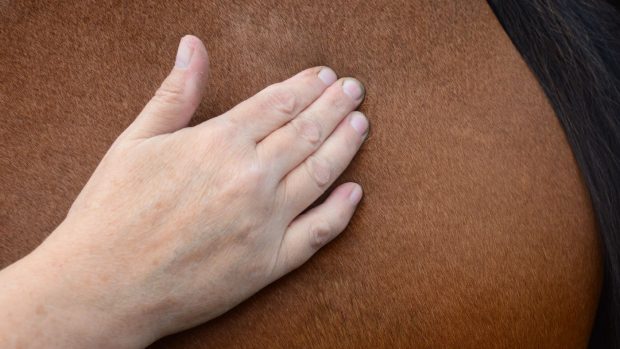According to Nicole Rombach, a qualified equine body worker from the renowned School of Equinology in California, the benefits of massage and gentle “passive” stretches can go a long way to improve a horse’s well-being.
Nicole, who is trained in equine sports massage, biomechanics, gait abnormalities, saddle-fitting and dentistry, opened the first equinology training college in Britain at Oldencraig Equestrian Centre in Lingfield, Sussex, where students include vets, chiropractors and massage therapists as well as trainers, instructors and owners.
She believes that equine massage, regularly performed by a qualified practitioner, can go a long way to restoring peak performance by encouraging the release of muscles that have become contracted and fatigued.
“Where a muscle is not functioning correctly, another will compensate and overwork, making it tighter and encouraging the build up of lactic acids,” explains Nicole. “This means that the horse is not able to work with his usual range.
“Massage and passive stretching works well as a preventative and avoids problems before they become an issue, although it shouldn’t be seen as a miracle cure.”
Nicole recommends a full session every seven to 10days as a supplement to training.
“Horses enjoy the individual attention, so the benefits of massage are not purely physical, but psychological, too.
“I always discuss the horse’s medical background with the vet and liase throughout the body work sessions.”
According to Nicole, equine sports massage is ideal for competition and leisure horses alike, as a method of both diagnoses and treatment, so that levels of stamina and fitness are improved using non-invasive techniques.
“By standing him square, I can check his muscular symmetry,” she explains. “I’m looking for any limb deviations or rotations, as well as areas of possible strain.”
The horse is then walked and trotted in a straight line, before being lunged in walk, trot and canter on both reins, allowing his footfalls and willingness to move forward to be assessed.
Nicole will also look at the horse’s teeth and saddle fit before moving on to check for changes in muscle tone and for sensitivity, all of which may indicate areas that could benefit from body work sessions.
The session involves softening isolated or whole groups of muscles, using a combination of gentle passive stretches, which the horse is encouraged to do himself, and massage strokes from head to tail.
Once completed, Nicole issues a worksheet of suggested routines for owners.
“There are various simple stretches that I teach owners to do with their horses. The exercises only take a few minutes and can easily be incorporated into the daily training regime. Most horses learn these quickly and look forward to being stretched after warm-up or at the end of their training session.
“Grooming with a soft rubber curry comb is also extremely beneficial. This should be performed along the whole body using a light pressure, but making sure you avoid the delicate bony areas.
“The horse will often tell you where he needs you to work by leaning into you when he’s enjoying it and moving away when you hit a sensitive area, which is usually a good indication that something not right.”
By doing this every day, it helps to eliminate toxins and promote and maintain circulation.
“The benefits of grooming and stretching are not only physical, but psychological too, as it helps build up trust and increases bonding.”




